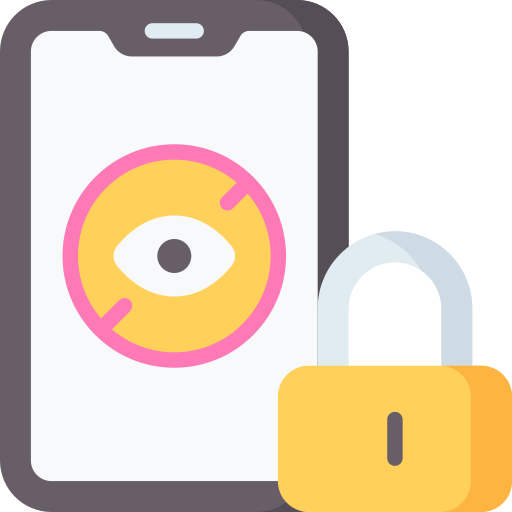The Importance of Setting Boundaries for Computer Use
Setting boundaries for computer use is crucial in today’s digital age. With the increasing dependency on technology, it is important to recognize the potential negative impacts of excessive screen time. Without clear boundaries, individuals may find themselves spending hours upon hours mindlessly scrolling through social media, playing video games, or binge-watching TV shows. This can lead to a sedentary lifestyle, lack of physical activity, and poor overall health.
By setting limits on computer use, individuals can regain control over their time and prioritize their health and well-being. Setting boundaries allows for a more balanced approach to technology, ensuring that time spent on the computer is purposeful and productive. It also helps to establish a healthy routine, where individuals can allocate specific time for work, leisure, and social interactions. By setting clear boundaries, individuals can create a healthier relationship with technology and prevent the negative consequences of excessive screen time.
Understanding the Impact of Excessive Screen Time on Health
Excessive screen time has been linked to a variety of health issues, both physical and mental. The sedentary nature of sitting in front of a computer or mobile device for extended periods can contribute to weight gain and obesity. Additionally, prolonged screen time can lead to poor posture and musculoskeletal problems such as neck and back pain. The blue light emitted from screens has been shown to disrupt sleep patterns, leading to difficulties falling asleep and staying asleep.
Mental health can also be negatively affected by excessive screen time. Studies have found a correlation between increased screen time and symptoms of depression and anxiety. The constant exposure to social media and online communities can lead to feelings of inadequacy and comparison, damaging self-esteem and overall wellbeing. Moreover, the addictive nature of technology and the constant need to be connected can lead to an unhealthy relationship with screens, causing social isolation and a decrease in real-life interactions.
Strategies for Limiting Computer Usage Without Being Overly Restrictive
One approach to limiting computer usage without being overly restrictive is to establish a daily time limit. This can be achieved by setting specific hours during which computer use is allowed, such as a couple of hours in the evening after completing homework or work tasks. By clearly defining this time frame, individuals can still enjoy the benefits of using a computer while keeping their usage in check. It is important to communicate these rules with transparency, explaining the reasons behind the limitations and ensuring everyone understands the boundaries.
Another strategy is to encourage balance by incorporating other activities into daily routines. This can be achieved by scheduling specific times for physical exercise, hobbies, or spending time with family and friends. By consciously engaging in different activities, individuals can develop a well-rounded lifestyle that minimizes excessive screen time and promotes overall well-being. Discovering alternative ways to spend time away from the computer can also help foster creativity, problem-solving skills, and social interactions.
Recognizing the Signs of Computer Addiction in Yourself or Others
Excessive computer use can sometimes lead to addiction, which can have a significant impact on both an individual’s physical and mental well-being. Recognizing the signs of computer addiction in yourself or others is crucial in order to address the issue effectively.
One common sign of computer addiction is an intense preoccupation with computer activities. This might manifest as spending an excessive amount of time on the computer, neglecting other responsibilities such as work or school, and becoming socially isolated. Individuals who are addicted to the computer may also experience withdrawal symptoms, such as irritability or restlessness, when they are unable to use the computer. Additionally, they may exhibit a loss of interest in activities they previously enjoyed, opting instead to spend most of their time online.
Exploring the Benefits of Balancing Computer Use with Other Activities
In today’s digital age, computers have become an integral part of our lives, offering a multitude of benefits and conveniences. However, it is important to strike a balance between computer use and engaging in other activities. By doing so, individuals can experience a range of benefits that enhance overall well-being.
One of the key benefits of balancing computer use with other activities is the opportunity to promote physical health. Spending excessive time sitting in front of a screen can lead to a sedentary lifestyle, which is associated with various health issues such as obesity, cardiovascular problems, and musculoskeletal disorders. By incorporating other activities such as exercise, outdoor recreation, or pursuing hobbies, individuals can maintain a healthier lifestyle. Engaging in physical activities not only helps to improve cardiovascular fitness and strengthen muscles but also boosts overall mood and mental well-being.
Additionally, balancing computer use with other activities allows individuals to cultivate a more well-rounded skill set. While computers offer numerous educational and professional opportunities, it is equally important to engage in offline activities that facilitate personal growth. Reading books, engaging in hands-on hobbies, or participating in social events can enhance cognitive abilities, creativity, and problem-solving skills. By diversifying one’s activities, individuals can acquire a broader perspective and develop a range of abilities that may not be fully nurtured through computer use alone.
In conclusion, exploring the benefits of balancing computer use with other activities unveils a world of advantages that contribute to physical health, personal growth, and overall well-being. By finding the right balance and incorporating a variety of activities into our daily routines, we can maximize the benefits of computer use while enjoying a more fulfilling and enriching life.
Establishing Clear Rules and Expectations for Computer Time
Establishing clear rules and expectations for computer time is essential for maintaining a healthy balance between technology and other activities. By setting specific guidelines, both adults and children can develop a better understanding of how much time they should spend on their computers and what activities are acceptable.
When establishing these rules, it is important to consider the age and needs of the individuals involved. For younger children, it may be beneficial to limit computer time to educational activities or designate certain times of the day for use. For older children and adults, a more flexible approach can be taken, with guidelines that encourage a balance between computer use and other activities such as exercise, socializing, and hobbies. Clear communication of these rules is key, ensuring everyone understands the boundaries and expectations surrounding computer time.
By establishing clear rules and expectations, individuals can develop a healthier relationship with their computers and avoid the negative consequences of excessive usage. These guidelines not only promote a balance between technology and other activities but also foster a sense of responsibility and self-regulation. With everyone on the same page, the use of computers can become a productive and enjoyable part of daily life.
Creating a Supportive Environment to Encourage Healthy Computer Habits
In order to encourage healthy computer habits, it is important to create a supportive environment where individuals feel motivated and empowered to make positive choices. One way to do this is by setting a good example ourselves. When children or others see us demonstrating balanced computer use and engaging in other activities, they are more likely to follow suit.
Another way to create a supportive environment is by establishing clear guidelines and expectations. By setting specific rules for computer time, such as limiting usage to a certain number of hours per day or designating certain times as “screen-free” zones, individuals are more likely to develop a healthier relationship with technology. It is important to communicate these rules effectively and consistently enforce them, while also allowing for flexibility and understanding in certain circumstances. By doing so, we can foster an environment that promotes healthy computer habits and encourages individuals to seek a balance between screen time and other activities.
Discovering Alternative Ways to Spend Time Away from the Computer
In today’s digital age, it’s become all too easy to spend hours upon hours glued to our screens. However, it’s important to remember the value of stepping away from the computer and engaging in alternative activities. Discovering alternative ways to spend time away from the computer can not only help improve our mental and physical well-being but also provide us with a much-needed break from the digital world.
One alternative to consider is getting outside and reconnecting with nature. Whether it’s going for a hike in the woods, taking a leisurely bike ride, or simply enjoying a picnic at the park, spending time outdoors can rejuvenate both mind and body. Beyond the physical benefits, studies have shown that being in nature can help reduce stress levels, improve mood, and increase creativity. So, instead of scrolling through social media, why not venture outside and explore the beauty of the natural world?
Implementing Effective Tools and Techniques to Monitor and Control Computer Use
Effective tools and techniques to monitor and control computer use can play a crucial role in maintaining healthy habits and avoiding excessive screen time. One such tool is using parental control software that allows parents to set time limits and restrict access to certain websites or applications. This can be particularly useful for parents who want to ensure that their children are not spending too much time on the computer or engaging in inappropriate online activities. Additionally, monitoring software can provide insights into computer usage patterns, allowing users to better understand their own habits and make necessary adjustments. These tools create accountability and promote responsible computer use for both children and adults alike.
Another effective technique for monitoring and controlling computer use is implementing a designated computer-free time or zone in the household. Whether it’s during mealtimes or in the evenings before bed, setting specific times where computer use is not allowed can help individuals establish a balanced routine. This technique encourages alternative activities such as reading a book, engaging in physical exercise, or spending quality time with family and friends. By creating dedicated time away from the computer, individuals can prevent the habit of constantly being glued to the screen and cultivate a healthier lifestyle overall.
Nurturing Open Communication and Collaboration When Discussing Computer Usage Limits
When it comes to discussing computer usage limits with others, fostering open communication and collaboration is key. It is essential to create an environment where everyone feels comfortable expressing their thoughts and concerns without fear of judgment or punishment. Encourage open dialogue by actively listening to each other’s perspectives and being respectful of differing opinions. This will not only help in understanding each other’s needs and priorities but also promote a sense of mutual understanding and empathy.
Additionally, collaboration is crucial in finding common ground and creating solutions that work for everyone involved. Instead of imposing rules or restrictions unilaterally, involve all parties in brainstorming and decision-making processes. This can be done through group discussions, family meetings, or even setting up a shared calendar where everyone can input their preferred computer usage times. By actively including others in the decision-making process, you can foster a sense of ownership and responsibility, making it more likely that everyone will adhere to the agreed-upon limits.
Why is it important to set boundaries for computer use?
Setting boundaries for computer use helps promote a healthy balance in life, avoids excessive screen time, and prevents potential negative effects on physical and mental health.
What are the potential impacts of excessive screen time on health?
Excessive screen time can lead to various health issues such as eye strain, sleep disturbances, sedentary behavior, poor posture, social isolation, and decreased physical activity.
How can I limit computer usage without being overly restrictive?
You can limit computer usage by setting specific time limits, encouraging breaks and physical activity, promoting offline activities, and providing alternative options for entertainment and relaxation.
What are the signs of computer addiction that I should look out for?
Signs of computer addiction include neglecting other responsibilities, preoccupation with computer use, loss of interest in other activities, withdrawal symptoms when not using the computer, and unsuccessful attempts to cut back on usage.
Why is it important to balance computer use with other activities?
Balancing computer use with other activities helps maintain a healthy lifestyle, promotes social interaction, enhances physical fitness, improves mental well-being, and fosters personal growth and development.
How can I establish clear rules and expectations for computer time?
To establish clear rules and expectations, communicate openly with family members or roommates, involve everyone in the rule-setting process, be consistent, and consider individual needs and circumstances.
How can I create a supportive environment to encourage healthy computer habits?
Creating a supportive environment involves providing alternative activities, setting a good example, offering praise and rewards for balanced computer use, and fostering open communication without judgment or criticism.
What are some alternative ways to spend time away from the computer?
Some alternative activities include engaging in physical exercises, reading, pursuing hobbies, spending time with family and friends, participating in outdoor activities, and exploring new interests.
Are there any effective tools or techniques to monitor and control computer use?
Yes, there are various tools such as app blockers, time management apps, parental controls, and website blockers that can help monitor and control computer use effectively.
How can I encourage open communication and collaboration when discussing computer usage limits?
Encouraging open communication and collaboration involves actively listening to concerns, expressing empathy and understanding, involving all parties in decision-making, and finding compromises that work for everyone involved.




